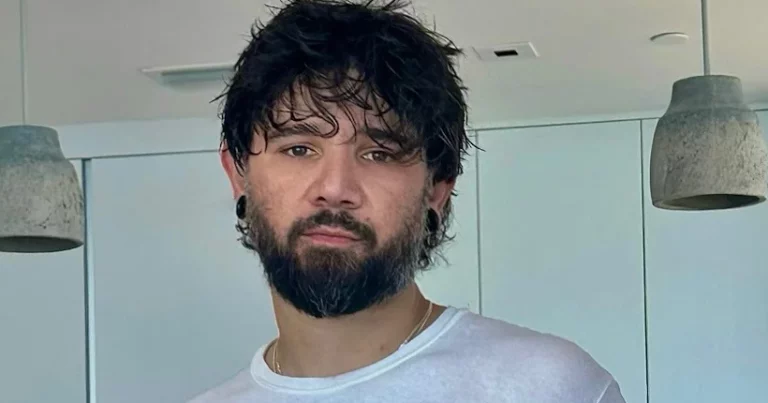As you grow into adulthood, the young version of yourself becomes as mythical as the things that captured that person’s imagination. For Keaton Henson, who came up playing in hardcore and emo bands before forging a career as a reclusive singer-songwriter (albeit one who’s stepped as far as into the world of classical music), that was emotive loud music – specifically the kind that was made in America, by people whose lives he knew little about. He was drawn to iterations of it that flourished locally, but it wasn’t until he experienced life in America that he realized that resonance had little to do with geography. His new record, Parader, is torn between his present reality of living in the English countryside and the fragmented memories that reverberate through it; fittingly, production duties were split Luke Sital-Singh, who grew up with similar reference points as Henson, and Alex Farrar – in his words, “the king of that loud, snarky American DIY sound” – who helped him tap into a grungy, guttural confidence that used to be as formative as it was aspirational, even mythical. “Do I really have any business now/ Singing this song and sounding like I did when I was eighteen?” he sings on ‘Past It’. Singing to him, maybe, the part he knows would be stoked about being part of the whole parade.
We caught up with Keaton Henson to talk about Hundred Reasons, badly printed zines, Christopher Norris, and other inspirations behind his new album Parader.
Hundred Reasons
They’re a Surrey-based band, which is where I grew up. They were huge for me growing up. I always listened to absolutely everything – there’s not really a genre that I haven’t, at some point, become obsessed with. But I would say emotive loud music was the thing that really had my heart from the age of 12 to the age of now. As soon as I became a teenager, the idea of emoting loudly really connected with me. But it was very American – I saw that art form of shouting about feelings as a very American art form. [laughs] A lot of the bands now known as first wave, second wave emo bands that I loved growing up, they painted this very mythical. That was my escape, I guess, which is probably going to come up a lot with my answers to these questions. But Hundred Reasons were one of the first bands that I came across that looked like the kind of dork that I was and were from near me, but they were doing a very unique south of England version of that sound. A lot of the other bands around when I was young were just kind of copying that sound, but this felt really unique and specific.
It was a kind of scene – there was Hundred Reasons, Hell Is for Heroes, a band called Ruben. There were a bunch of Surrey bands, and it made the whole thing feel achievable. It wasn’t just for the people that lived in this magical American realm. It was something that I could do, and I think they probably were one of the bands that made me feel like I could write music that represented my fragility, I suppose. There’s a lot of people just shouting and making really heavy music, but I think they were the first band where their fragility resonated with mine. They were showing it really confidently, which felt very empowering. I think that their songwriting was amazing and still holds up.
I saw that they regrouped after the pandemic, and they released a new album a couple of years ago. Did that play a part in revisiting their music?
I remember checking what they were up to, and being like, “Whoa, no way.” But I think what happened was, it’s an age thing – I guess it’s probably quite normal that the moment you start to feel old, you just start to think about being young. So I just started really thinking about my youth, musically wanting to feel what I used to feel, really missing how much music used to mean to me, how much it used to completely engulf me. Because it’s my job now, and I listen to it a lot for work. It’s kind of like a cheat code of re-feeling that, because it reignites those same feelings and makes the world magical again. I was really surprised by how much it did that. And then I started writing songs, and I think it naturally crept in; I just started tuning all my strings down without realizing it, like, snuck in to drop D.
You also cut your teeth playing in hardcore and emo bands, and that youth is filtered on Parader through your present self. What was it like letting those memories creep into the sound of the record?
It was really great. What it did that I wasn’t expecting was that it unlocked in me the communal nature of music that I feel I’ve been neglecting. Because of my nature as a bit reclusive, it means that I sort of necessarily have created music in a vacuum. I’ve got in this habit of thinking of songwriting as a very isolated, insular experience. Listening to that music and writing music that needed drums and stuff, I just started wanting people in the room, so I started writing with other people in the room, just being way more collaborative. I did write music when I was by myself when I was young, but the first time that I really experienced music as a creator, I was in a room with other people, and we were writing songs together.
I’ve been thinking a lot about how I think that’s a lot of people’s first experience of communal vulnerability. When you’re a teenager, everyone’s trying to be cool, and everything’s quite performative, but there was something about getting in a room and writing songs about your breakup or whatever – it was the first time that you just fully let yourself be vulnerable around other people. If I was to give you a sound that sums up that feeling, it would definitely be Hundred Reasons for me.
I’d love to hear some memories that come to mind when you think about that sense of community and playing in bands.
Because I didn’t have any bands that sort of succeeded in any way when I was young, it remained just for fun. I think what this record that I’ve just made captures, for me, is the kind of fragmented, abstract nature of memory, and how non-linear memory is – often it’s almost like a collage, which is why I did collage for the artwork. Everything just feels very jumbled, but I definitely have vivid memories of, like, a very specific rehearsal room carpet. There’s this communal memory of creating music, but also just the first time you walk into a room and everyone looks like the kind of weird that you are. The thing about the sort of music that I’m talking about – at the time, you couldn’t call it emo, that was so offensive, but it was the idea of being in rooms full of people who are celebrating fragility in a kind of punk way. There was so much criticism leveled against emo as a genre, but for me, it was just being so fragile and vulnerable that you were punk about it.
Steak Mtn. (Christopher Norris)
This is someone who’s worked visually with bands like Against Me! and Jeff Rosenstock, but also has a history in the hardcore scene. It’s an interesting reference point, given that you do your own visuals and have illustrated for acts like Enter Shikari and Oli Sykes’ Drop Dead.
I needed to talk about artwork, because that was a huge part of it for me. It went on to become a big part of my life and my work, and it’s still one of the parts of my job as a musician that I value the most: creating visuals to go around the music. I had to be honest about who, for me, was doing the coolest stuff, and I wanted to physically own anything that he’d designed. From a really dorky point of view, for this record, I’ve taken a lot of font inspiration from his stuff. [laughs] There was just a fuck you-ness about his work that I really envied, because I don’t necessarily know if I had that in me. But when I went on to become an illustrator, he pretty much continued to be an inspiration throughout lots of different visual periods for me. I changed my style quite a lot when I was first doing that as a job, but he was the constant. He really created a visual for a very specific genre, what that music looks like, which has always been one of my favorite questions when I finish a record.
What excited you about the answer to that question with Parader?
I knew that I could go somewhere different. This sounds so silly, but I’ve struggled since my album Monument, with the little ceramic dog on the cover. I was so happy with that. When I found that ceramic dog, I was like, “This is it.” As soon as I finished that record, I was like, “There’s no way I can follow that sad ceramic dog.” I genuinely didn’t know what to do. So I got someone else to do the painting for House Party, an artist that I really admire, Preston Pickett. And then this record, I was really excited, because I had a sense of what it looked like. I always do – while I’m writing the songs, I feel like the colors and shapes start to float around in my head, and it’s just figuring out what those colors and shapes are trying to say when it comes to the album art. I wanted it to look like it could potentially be an emo record, but twisted through my very specific aesthetic lens. Which is what, hopefully, I did with the music as well. It’s not by any means an emo or a grunge record – it’s those sounds put in the mixing part of my brain.
I found an interview with Christopher Norris that mentions him making art that is “permanently inked on people’s flesh.” I’m curious how you feel about that when it comes to your visual work for your own music or for others. I’m thinking of that also in the context of the parader as someone who shows their wounds for a living, and how that takes on a new meaning when it’s other people marking their bodies with that imagery.
I like that, I hadn’t thought about that symmetry – the idea that I carry my wounds in my songs, and other people get them tattooed, so they’re literally carrying my wounds for me. [laughs] It frightens me, but it doesn’t feel that different from how I generally feel about people who like my work – that they frighten me. I don’t want to let anyone down, and sometimes I can feel like a fraud, because I’m mostly thinking about myself and doing it because it keeps me going. So sometimes, it scares me to look up from my desk and realize that there’s other people involved in this, or that it has stakes outside of my own… sanity?
The tattoo thing feels like a continuation of that. But what I would say is that because I was an illustrator beforehand for other bands, I saw my work tattooed a great bit before it was about me. It was people getting tattoos of album art and designs for bands that I was doing illustration for. I think that probably softened that for me. I was maybe used to seeing my art on people. I used to be able to stand next to people who had my drawing on their arm, but they’d have no idea that it was my drawing. I kind of miss that.
Hagstrom Viking baritone guitar
I have a thing – I think it’s the reason I tend to make different genre albums – I need to keep myself in a place of wonder. As small an amount of wonder as it might be, I always want to feel like I’m slightly feeling around in a dark room. That keeps me interested, so quite often, if I’ve just put out a record of one genre, I’ll just immediately start trying to write from somewhere that I don’t feel comfortable. As soon as I understand how something is done, it interests me less. Sometimes if I’m writing and I feel stuck or I feel too comfortable, just a different instrument is does the same thing. I knew I wanted to write a guitar record, so I got this baritone, which immediately put me in a darker, doomier place musically. I think that probably did inspire me to start playing with slightly heavier, darker tunings. A lot of the songs on the record are just standard folk chords, but just by the nature of playing them on the baritone makes them feel like gnarlier in a way. It’s become my go-to guitar now.
Even softer, quiter songs like ‘Past It’ and ‘Furl’ have uniquely warm fuzz to them.
It has a darkness to it, which is really lovely – as you say, a warm darkness.
What do you remember about sitting down to write ‘Furl’? I know it’s your first co-write with your wife, Danielle.
She’s next door, so you’ll just hear shouting if I get this wrong, but I think I walked past the room, and she was playing something that went on to become that guitar part. I put my head in and was like, “What’s that? Can I have it?” [laughs] But we haven’t written together – she’s sung on so many of my records, and I’ve worked on hers, but we’ve never written a song together. It was kind of weird for us. I was like, “I’d love to… Could we… Should we write that into something?” But I think we both felt weird about that vulnerable space I was talking about before, being there together. Because we know each other in so many ways, but to know someone in the sense of being in a room and writing a song with them is a very specific kind of interaction. It’s a really intimate conversation to have, and it exposes a lot of vulnerability in a very different way. You’re putting this naked idea into the air and asking someone not to laugh at it.
Quite often, if I’m in the room with someone else who I know is a songwriter and does lots of writing sessions with others, you can both feel kind of hardened to it. But when it’s your wife and she knows you really well – I think what happened was we just wrote it and started saying things that, in an ordinary writing session, I’d have to try and explain to someone what I meant by that very abstract, weird, guttural lyric. “The years that hang like rain,” or referring to myself as a bellyache – I would have to explain to someone the convoluted things behind that, whereas when I was with Danny, she just was like, “Yep, I know exactly what you mean.” We wrote it really quickly because of that. There was no trying to explain what we were talking about.
Sunny Day Real Estate
There are so many artists from that era or scene that I could talk about. But Sunny Day, they’re the ones that I’ll still never skip if they come on shuffle. It still does all the same stuff to me. They’re a really great example of what I was listening to – it’s not even to do with production or fuzz; it’s to do with chords. The chords that they use evoke that mythical America that I escaped to in my head when I was young. I personally avoid reading about musicians, so I don’t really know anything about artists other than what I read in their lyrics. But for me, they just typified this idea of people in a garage in the suburbs putting these really magical chords out. I think Sunny Day Real Estate is just a brilliant name, and if you look at that whole wave – Braid, Mineral, Promise Ring, Jawbreaker – there’s something so evocative about the names, the artwork, the music. At the time, it was like a sanctuary of sound and visuals and words.
The other thing about them that inspired me, not necessarily on this record alone, but in general, is that all those bands were so great at the loud/quiet thing. I think I’m probably predominantly known as a quiet artist, but I’ve always been hyper-aware of the fact that your quiet moments will never feel as quiet and desolate as when they are preceded by something loud. From quite early on in my career, I started putting at least small moments of explosion into records, just to make those quiet moments feel more impactful. It comes from Pixies, but it probably also comes from Sunny Daniel Estate.
Barely held together pink Converse
I found you mentioning this in an interview you did almost 15 years ago. You talk about being 16, wearing headphones at the dinner table, and wearing pink Converse.
Did I? Oh my god. Once one pair physically couldn’t stay on my feet anymore, then I would get another pair. Usually pink, and always high tops. And then I’d be furious that they weren’t falling apart yet, and I couldn’t relax until they were starting to threadbare. These are basically all the same answer but just in different formats – I think of Converse as an all-American thing. Converse didn’t have any sports affiliations in the UK, so I just saw them as uniform. I think the fact that they were pink was just an added element of me not wanting to be seen as what people thought I should.
What do you think it is that makes you hold on to a piece of clothing like that?
It didn’t remain pink Converse, necessarily, but what I wear as armor – it became something I used quite a lot. It wasn’t a conscious thing, but I started to wear the same suit when I first broke through as a musician. It’s probably a similar thing, just a sense of maybe not necessarily knowing confidently who I am. When I used to put the same suit on every day, it used to feel like armor, and it shows the part of me that I’m willing to give away. In that sense, it was a very archaic, old-fashioned, sort of sad fraction of myself. That was the part of me that I was happy to give away. And potentially, when I was younger, maybe it was the same with Converse – this fragile, slightly falling apart, feminine version of me was the version of me that I was happy to project. I really went out of my way to not do or wear anything that feels overtly male. I’m not sure, but there’s definitely a parallel there that I swapped my ragged pink Converse for itchy black suits when I transitioned into being a musician. Recently, I’ve started wearing Converse again, and I’m like, “God, they’re so comfortable!” But they’re less practical because I live in the woods.
You talked before about being frightened by other people listening to your work, which is partly why I brought up this old interview – you were expressing the same sentiment, even though you’d only made seven songs publicly available. Is there a part of it that’s as scary as it was back then, or has the fear morphed over time?
Sometimes I think maybe the things that once frightened me, it was just my subconscious telling me that that stuff wasn’t going to nourish me in any way. It wasn’t something I needed, or I needed to be aware of. I think that’s somewhat protected me from becoming caught up in needing more people to listen to stuff. I think that fear has protected me from those trappings that I see people fall into. I’m still frightened of most things, but I think I’ve learned how to use certain elements of it as a way to protect myself or keep myself focused on things that really matter.
If you could show that young, pink Converse-wearing version of yourself a song from Parader, which one would it be?
Oh, that’s such a good question, because that was something that I thought about. I don’t know if you ever do this, but sometimes I wonder – if I said, “I live here. This is what I do for a living. This is what a day looks like,” I really try and imagine what that guy would say, whether he’d be super excited. I think prior to this record, I genuinely think he would have been like, “Why aren’t you making cool music?” [laughs] I loved folk music at that time, but I don’t think I ever thought I would be making it. I definitely didn’t think I’d be making classical music. But I think he’d be super into ‘Operator’ and ‘Insomnia’. I think he’d probably think it was a little too soft, still.
Badly printed zines
“Badly printed” is really important, because the more illegible it was, the better. As soon as something looked like it had some money behind it, I was just not interested at all. It truly reminds me of a time where I would sit on a bus and read obviously hastily grabbed interviews with bands. Like, someone had obviously got two minutes while walking with a band and wanted to ask a few questions. I used to love the aesthetic of that, and again, it was the sense of feeling a part of something. There weren’t that many of these things printed, and it felt like a membership. There’s probably a performative element to it as well, because I do specifically remember reading them in public.
Not to make this whole thing a nostalgic longing for a better yesterday, but the effort and the hands-on nature of making zines – it didn’t feel like people were doing it because they wanted to become well-known zine makers. I think a lot of people were just doing it to feed their community. I don’t think I ever made any, but it typifies the things I loved about alternative music when I was younger. I’ve made a zine for this record, which comes with the bundle. I found the really crappy yellow paper that they always used – and I went through great effort to make sure it was the exact crappy yellow paper – and fulfilled my lifelong dream of putting together a badly printed scene.
Lawn sprinklers
I was gonna say 7-Elevens – I was trying to think of something that evokes America to me, but it was lawn sprinklers. We don’t have them here, we don’t need them because it rains 24-7. That sound, when it was in movies and stuff, just felt very suburban. When I was young, that would have been one of the components in this mythical America that I imagined. And then I moved to America, and I experienced real America. I woke up every morning at 5am, walked, and saw them all turn on. I just remember having that moment of walking down the street and the sprinklers all coming on and thinking, “I’m here.” In this record, there’s quite a lot of reckoning with moving to the mythical realms that you imagined, and reckoning with the reality of it. Not to say it’s about a sense of disappointment, but it typifies growing up – the idea that I’m not writing this song from the point of view of me and pink Converse, I’m writing it as an adult who has lived a life.
I kept surprising myself when I was writing these songs about now. I live in the middle of the countryside, in a very remote place in England, and I spend most of my time outside, getting rained on. I was writing about that and experiences in my life now, but then 7-Elevens kept popping into my lyrics. It was that idea of that fragmented memory. There was obviously some part of me that was thinking about the America of my youth, the America I experienced. It just neatly summed up that idea of growing up. There’s love and things, but they’ve become real and tangible and complex. Maybe there’s a conclusion that I’ve come to from this record, or this conversation, is that that mythical place still exists, and I can still escape to it, but it’s just not a geographical place. It’s a place made up of Converse and Sunny Day Real Estate and sprinklers from movies. The art that woke me up as a young person has completely formed this world that I can still escape to. But I’ve been to the geographical place and realized it’s not somewhere you can physically go.
I think part of realizing those youthful influences comes through in working with Alex Farrar on this record. I’ve talked to a dozen musicians who have worked with him, but you’re the first who is not American.
For me, the two people that tie really neatly into what we’ve been talking about are Julia [Steiner] and Alex. I think Alex has a big hand in forging a new mythical America for a new generation. I think the work that he’s doing and the people he’s working with – a lot of stuff’s coming from the South, but there’s a lot of artists in America who are creating this new alternative sound. It speaks to me in exactly the way that those bands spoke to me when I was young, but it doesn’t feel like retro rehashing; it’s just a new thing. Alex is just great at creating those sounds. To be honest, the collaboration was mostly me just being like, “Do whatever you want.” [laughs] The rest of the record was made by myself and Luke Sital-Singh, who grew up around me, he grew up in Surrey, so we were sharing those references. But I realized at one point that we were being so British and polite about everything, musically. The heavy moments felt like we were knocking on the door and asking to come in, and we needed an American to kick the door down. I thought Alex was the perfect person for that, and he totally delivered. It has this American confidence to it.
Ratboys, the way they do everything – it totally takes me back to that place. Julia’s voice makes me feel like when I first heard Rilo Kiley. The relaxed confidence, similar to Alex, that she has is something that I envied as a young person. Between Julia and Alex, for Converse Keaton, I guess some dreams came true. Even if I wasn’t collaborating with the bands I was listening to, I was collaborating with the people who are doing that now. It felt like finally being invited to the clubhouse.
This interview has been edited and condensed for clarity and length.
Keaton Henson’s Parader is out now via Play It Again Sam.




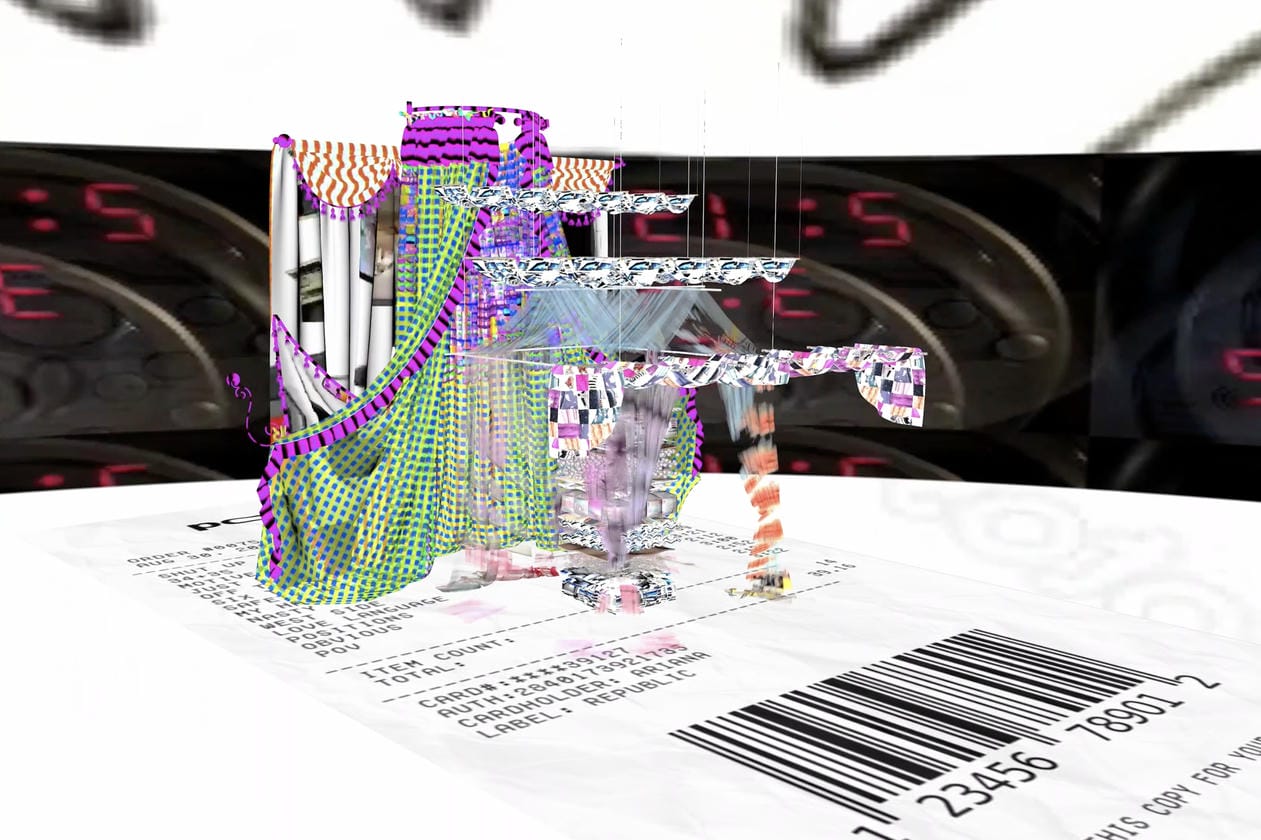
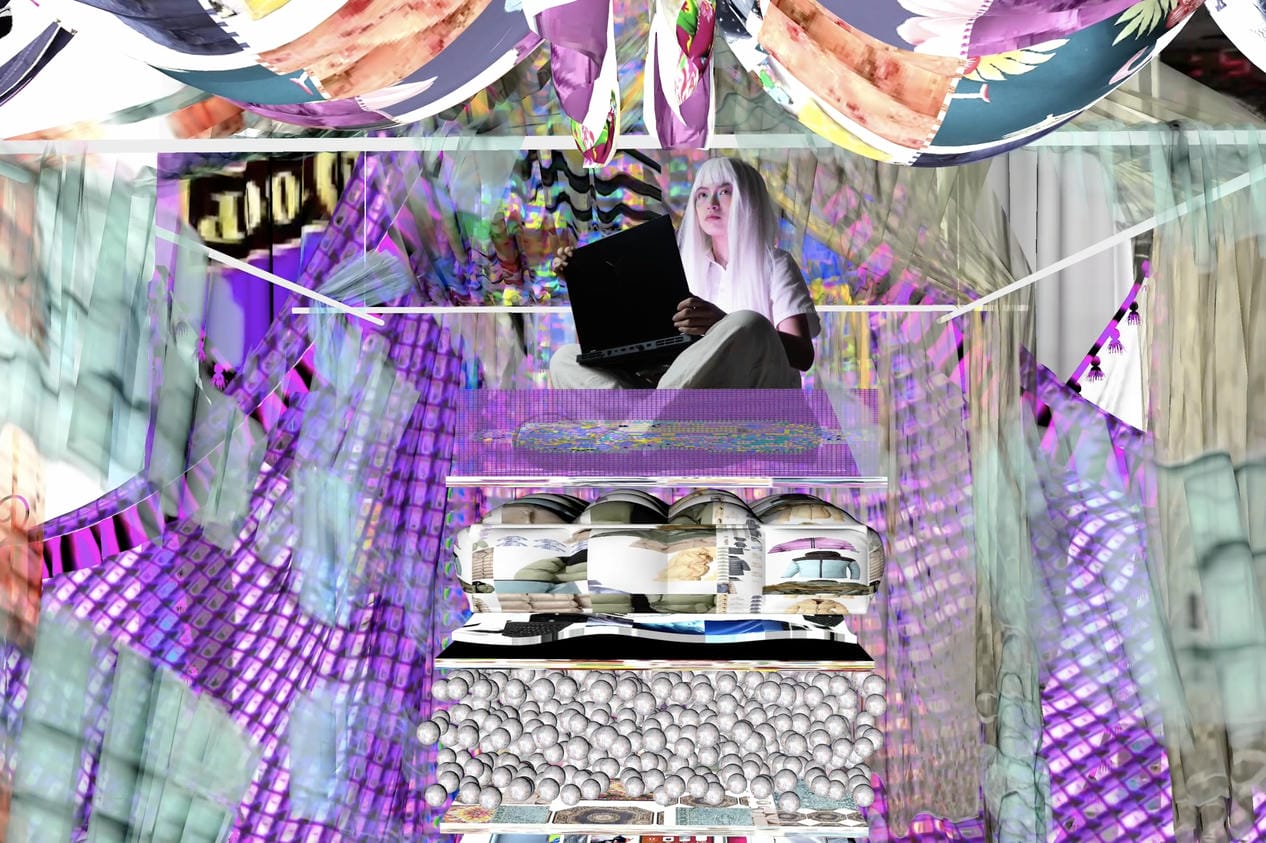

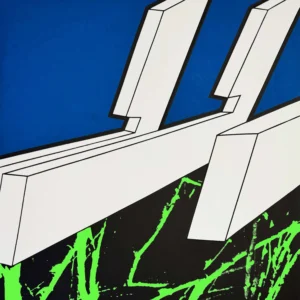 As far as
As far as 



 Tobias Jesso Jr. has returned with his first new album in over a decade. s h i n e, the understated, demo-ish follow-up to the singer-songwriter’s 2015 debut Goon, was announced just a week ago and features no more than eight tracks, including the previously released
Tobias Jesso Jr. has returned with his first new album in over a decade. s h i n e, the understated, demo-ish follow-up to the singer-songwriter’s 2015 debut Goon, was announced just a week ago and features no more than eight tracks, including the previously released 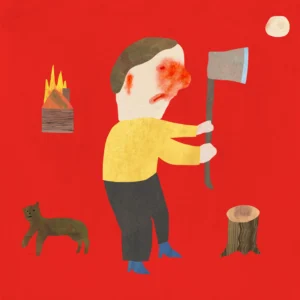 “Prior to being a mostly quiet musician I played in hardcore and emo bands,” Keaton Henson notes in the press release for his new album
“Prior to being a mostly quiet musician I played in hardcore and emo bands,” Keaton Henson notes in the press release for his new album  Kai Slater has had a busy year. He had his 2024 debut as Sharp Pins, Radio DDR, reissued by K Records’ Perennial imprint, and his other band Lifeguard also released its debut album. Slater is closing out the year with
Kai Slater has had a busy year. He had his 2024 debut as Sharp Pins, Radio DDR, reissued by K Records’ Perennial imprint, and his other band Lifeguard also released its debut album. Slater is closing out the year with 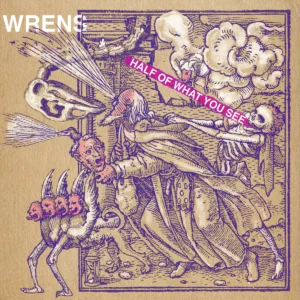 Brooklyn jazz-rap outfit WRENS have unveiled their playful, audacious new record, Half of What You See. It follows their 2023 debut, alligator shoes [on flatbush]. “There’s a long-standing aroma around the concept of the sophomore album that, for some, triggers involuntary vomiting of ‘what if it’s not’’s and similar brown notes,” Ryan Easter reflected. “The interesting thing about WRENS, same with many ensembles that are rooted in a constant through-line of reactive improvisation, is that the very essence of what is heard is rooted in three things: how good are they on their own, how good are they at knowing each others’ individuality, and what did they eat that day? This record is, as decided by the casually grown men involved, sinister.”
Brooklyn jazz-rap outfit WRENS have unveiled their playful, audacious new record, Half of What You See. It follows their 2023 debut, alligator shoes [on flatbush]. “There’s a long-standing aroma around the concept of the sophomore album that, for some, triggers involuntary vomiting of ‘what if it’s not’’s and similar brown notes,” Ryan Easter reflected. “The interesting thing about WRENS, same with many ensembles that are rooted in a constant through-line of reactive improvisation, is that the very essence of what is heard is rooted in three things: how good are they on their own, how good are they at knowing each others’ individuality, and what did they eat that day? This record is, as decided by the casually grown men involved, sinister.” De La Soul have dropped their first album since the 2023 death of David Jude Jolicoeur, the group’s founding member also known as Trugoy, Dave, and Trugoy the Dove. The vibrant 20-track effort features production contributions from DJ Premier, Super Dave, and Pete Rock, as well as guest spots from Killer Mike, Little Dragon’s Yukimi, Common, Nas, and the Roots’ Black Thought. “
De La Soul have dropped their first album since the 2023 death of David Jude Jolicoeur, the group’s founding member also known as Trugoy, Dave, and Trugoy the Dove. The vibrant 20-track effort features production contributions from DJ Premier, Super Dave, and Pete Rock, as well as guest spots from Killer Mike, Little Dragon’s Yukimi, Common, Nas, and the Roots’ Black Thought. “ “What do you want me to believe, and what can I not?/ What of our nature have we done forgot?” Haley Heynderickx sings on ‘to each their dot’, a haunting highlight off her new collaborative album with Max García Conover. A pensive, revolutionary spirit runs through
“What do you want me to believe, and what can I not?/ What of our nature have we done forgot?” Haley Heynderickx sings on ‘to each their dot’, a haunting highlight off her new collaborative album with Max García Conover. A pensive, revolutionary spirit runs through 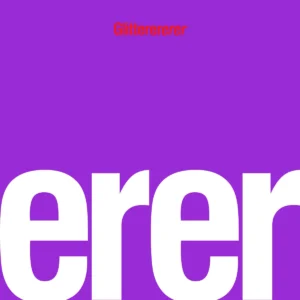 Glitterer – the band led by Title Fight’s Ned Russin – have followed up last year’s Rationale with a new album called erer. Out now via the band’s own
Glitterer – the band led by Title Fight’s Ned Russin – have followed up last year’s Rationale with a new album called erer. Out now via the band’s own 



